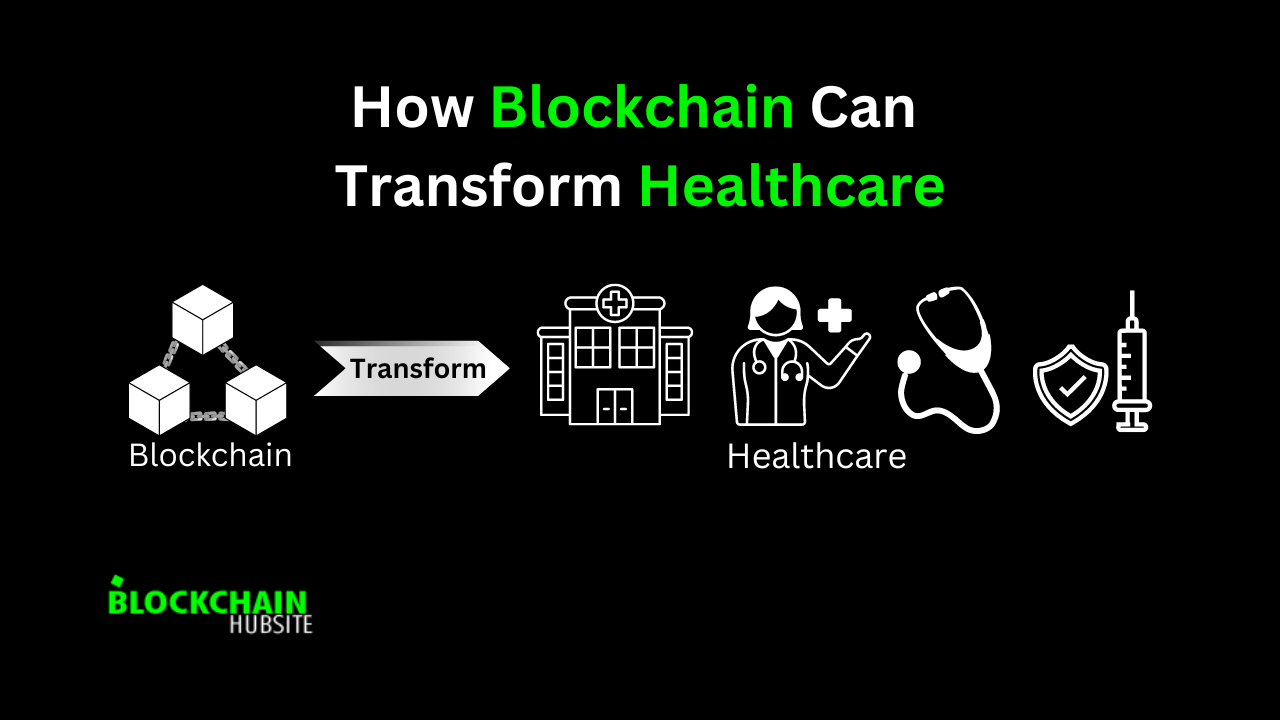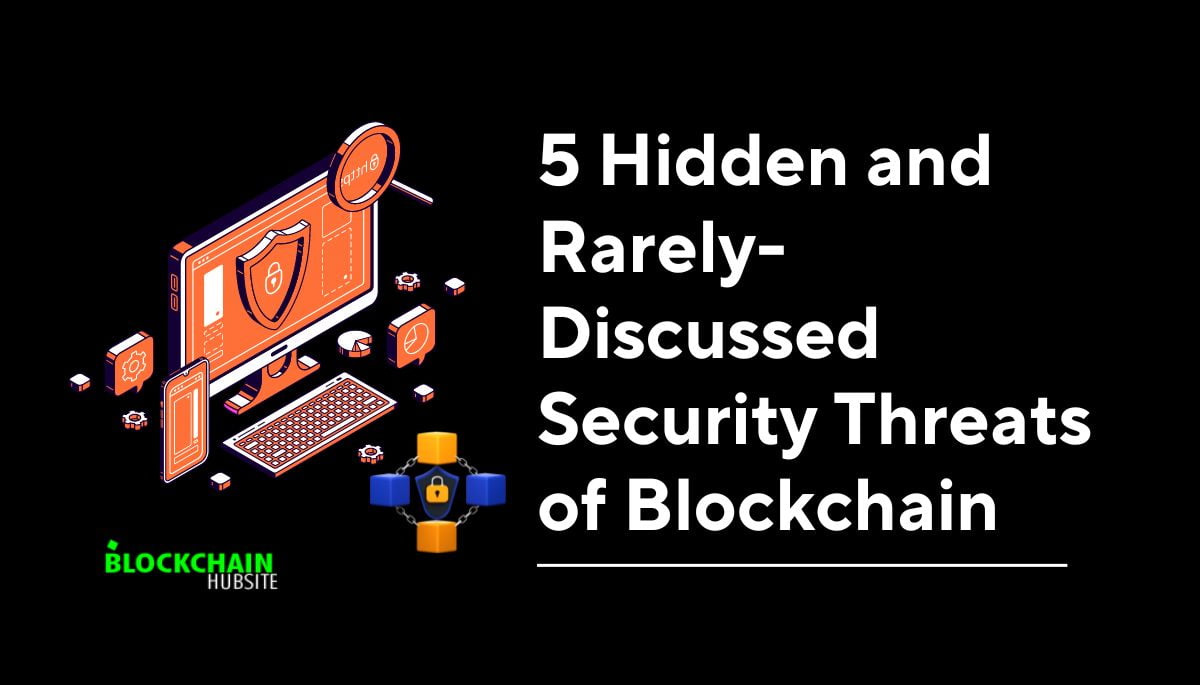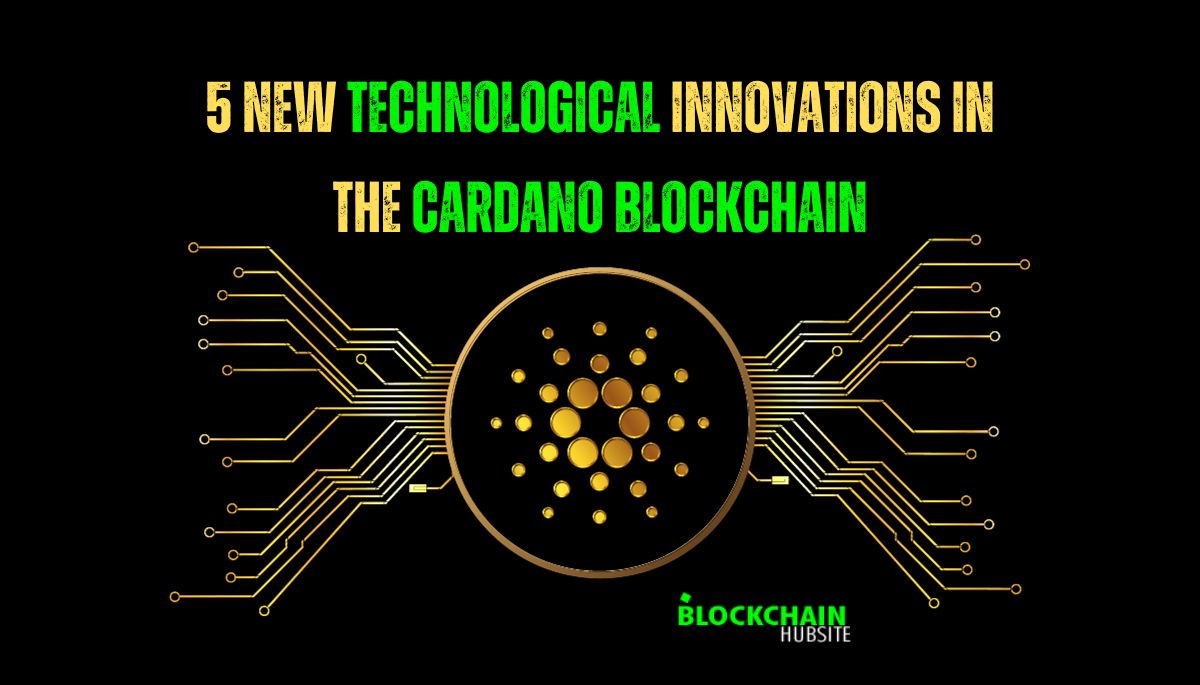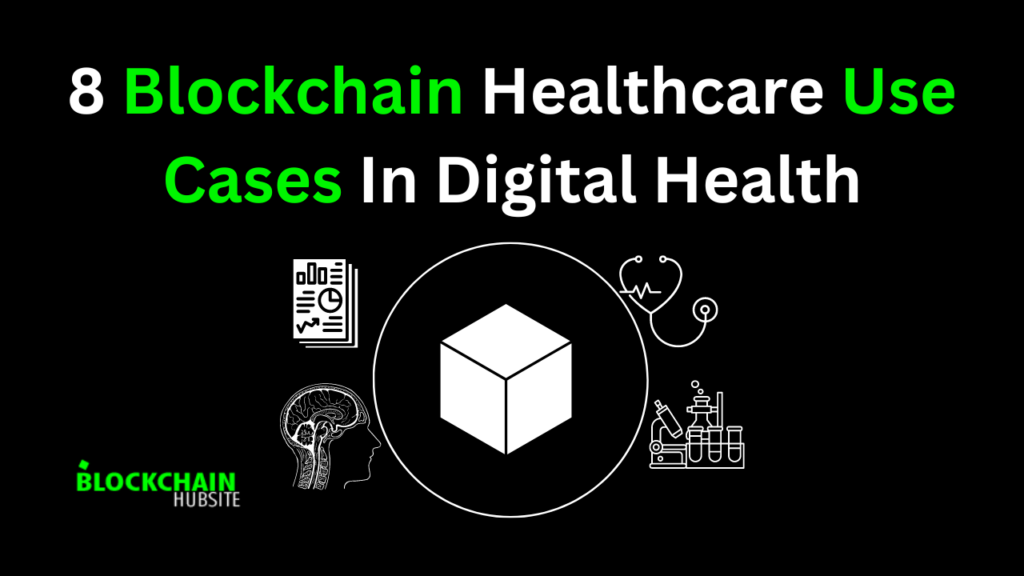
Table of Contents
Introduction
The complicated system of intermediates and the inability to track financial transactions are two significant causes of healthcare’s many issues. Some examples include the harmful effects of data silos on healthcare research and service delivery, the fact that only half of all clinical studies are ever published, rising drug discovery costs, and the increasing number of poor and counterfeit medications. Blockchain’s trust, traceability, and novel incentive systems can tackle these issues.
Blockchain has attracted much attention in the medical field because of its potential applications. Applications for blockchain technology include decentralisation, privacy, and security because they can, for instance, ensure that patients and different stakeholders (such as insurance companies, hospitals, and doctors) have secure access to medical data.
Overview and Architecture of Blockchain

Blockchain, originally suggested in 2008 as part of a proposal for Bitcoin, is a peer-to-peer network that operates on top of the internet. The blockchain is a public ledger consisting of a sequence of blocks that records all network transactions. The two main parts of a block are the header and the body. Each block’s header includes a hash of the previous block’s header. Therefore, each block structure is built upon the one before, creating a chain or linked list. The block headers include a Merkle tree, a timestamp, a nonce (random integer miners would frequently adjust to acquire a given hash value), and a nonce.
Simply put, a Blockchain transaction is a task broken down into its most minor component and recorded in a publicly accessible block. Most nodes in the network must agree that a transaction is legitimate before it can be processed. This makes transactions in the blockchain tamperproof. To ensure the immutability of the blockchain, all participants host and update identical copies of the distributed ledger.
Smart contracts, which are self-executing code on the blockchain infrastructure, encode the business logic that enables straight-through processing. Smart contracts become self-verifying, self-enforcing, and tamperproof when integrated into the blockchain. Blockchain has many valuable properties, including decentralization (since everyone can access the ledger), immutability (since no one can alter the ledger), availability (since everyone has a copy of the blockchain and can see everyone’s timestamped transactions), and anonymity (since everyone uses a randomly generated address to interact with the blockchain).
Taxonomy of Blockchain Systems
Four main kinds of blockchain systems are currently in use: public, private, consortium, and hybrid.
Public Blockchains: Like Bitcoin and Ethereum, public blockchains offer a fully decentralized network where all users can access the blockchain’s data and participate in the network’s consensus procedure.
Private Blockchains: Private blockchains track data flows between several groups or individuals within a company. If you still need to become a network member, you’ll need everyone’s permission before becoming one.
Consortium Blockchains: Consortium blockchains are private networks accessible only to authorized users. Auditing the system as a distributed database that stores and updates all participant transactions is possible. Hybrid blockchains are a type of blockchain combining the best features of public and private networks. Therefore, a public blockchain makes the ledger completely accessible, whereas a private blockchain controls access to ledger alterations.
Need of blockchain in healthcare
In terms of healthcare, advancement is accelerating at ever-increasing rates. There is a need in the current healthcare system for modern facilities that provide excellent care.
The healthcare industry expects to benefit significantly from Blockchain technology in this regard. Furthermore, the health system is shifting towards a patient-centred strategy prioritising two primary components: readily available services and enough healthcare resources. Blockchain technology helps healthcare providers deliver better patient treatment and build better hospitals. This technology also allows Health Information Exchange, a time-consuming and repetitive process that contributes to high prices in the health industry. Citizens can take part in health research programmes using Blockchain technology.
In addition, more extensive research and data exchange on public health will improve treatment for various communities. A single central database manages the entire healthcare system and enterprises. The most critical challenges in population health management today are related to the security, accessibility, and interoperability of data. Blockchain technology provides a trustworthy solution for this specific issue.
This technology improves confidentiality, portability, interoperability, data integrity, and real-time availability when used correctly. There are significant concerns regarding data protection, particularly in personalised medicine and wearables. Blockchain technology provides a safe and straightforward way for patients and medical professionals to record, send, and consult data through networks, alleviating these issues.
Applications of Blockchain in Healthcare

1. Blockchains in Electronic Health Records (EHR)
Medical professionals, hospitals, and healthcare devices have all contributed to the recent surge in the digitalization of medical health records since this data is more easily accessible and shared, allowing for better and quicker decision-making. Electronic medical records are currently the most popular use of blockchain technology in health care.
However, Electronic Health Records (EHRs) were not designed to manage lifetime records across multiple institutions; consequently, patients’ records become fragmented as they move from one provider’s records to another, losing convenient access to their prior records. Many researchers have suggested using blockchain technology to manage EHRs to engage patients in their current and historical healthcare data.
A ” MedRec ” prototype uses different blockchain benefits to manage authentication, privacy, data security, and easy data sharing. It’s based on a distributed database management system and promises to give patients access to their complete, immutable medical records from any of their care providers.
The “MedRec” programme does not save patient files or call for any readjustment period. It notifies the patient, who will ultimately be in charge of deciding where the information can go and stores a mark of the record on a blockchain. The mark certifies an unmodified copy of the record. It also shifts responsibility for ownership from the company to the individual patient, which might feel like a burden or an opportunity. We expect administration associations to act as patient agents for those patients who would rather have someone else handle their information.
Most of today’s patient entrances have complicated ideas, require more labour, and have different UIs in each foundation. The MedRec framework also features a user interface (UI) to provide continuous connectivity with mobile healthcare records. Loss of control over data, data provenance, auditing, and protected data tracing on medical data are all familiar challenges for medical data exchange during EHR deployment.
In light of these restrictions, Xia et al. developed MeDShare, a blockchain-based platform for the secure and private transfer of sensitive medical information between parties with varying degrees of trust. With improved data provenance, individualized audit control, and limited potential data security and privacy threats, MeDShare might share medical data and maintain electronic health records among cloud service providers, hospitals, and healthcare research groups.
Electronic health records (EHR) contain private and vital information on patients, which is routinely exchanged among doctors, radiologists, chemists, healthcare providers, and researchers to improve diagnosis and treatment. During the storage, transfer, and dissemination of this sensitive patient information through several entities, the patient’s care can be compromised, threatening the patient’s health and history.
When a person has a long history of treatment, follow-ups, and rehabilitation for a long-term illness, such as cancer or HIV, these problems can increase. So, keeping a patient’s medical information up-to-date has become essential to ensuring treatment works.
To overcome such restrictions, Dubovitskaya et al. developed a blockchain-based system for managing, maintaining, and exchanging cancer patients’ electronic medical records. They implemented blockchain technology with appropriate permissions to secure access, management, and storage of patient information. We can use these frameworks to apply blockchain technology to access and ensure patient data and history in clinical practices.
The Estonian blockchain-based project for medical records is another historical benchmark. In 2016, Estonia emerged as a global leader in blockchain technology with its proposal to safeguard the privacy of millions of medical records while making them freely accessible to healthcare providers and insurers.
Assuring patients that unauthorized parties can’t change their medical records using blockchain technology may be a driving factor in the technology’s rapid adoption in the medical field. Any attempt to view or change the data can be easily marked and seen by everyone in the blockchain. This helps protect patients’ privacy and uncovers illegal activity, such as widespread fraud or tampering with patient records. Sharing and evaluating records for certified pharmaceutical services will also be much easier.
When a patient goes to a doctor’s office, most of that patient’s doctors see it quickly. All blockchain records may be updated rapidly to account for medication bugs, hypersensitivities, and pharmacological solutions using patient-care algorithms, eliminating the need for time-consuming pharmaceutical compromise forms. Therefore, blockchain technology will promote better access to treatment, medical record management, fast validation of clinical information, increased security, and more efficient care organization.
2. Save information about a specific patient
A massive amount of patient data and health information is created before and after a clinical investigation’s various stages. Several blood tests, quality assessments, estimates, and wellness polls have been conducted on several individuals. It may produce results that prove the presence of a particular record or document.
When healthcare practitioners examine the recorded data, they may need clarification about its veracity; we may resolve this quickly by comparing it to the original records held in the blockchain. Existing cryptographic techniques form the basis for blockchain, including the proper data-sharing cryptographic framework. During patient details, the healthcare worker writes the patient’s name, date of birth, diagnosis, treatments, and ambulatory history in an EHR format. This data is typically kept in existing databases or on the cloud.
3. Verification
Algorithms check and verify each transaction in a Blockchain until it is added to the chain. Once the content is encrypted, digitally signed, and preserved, it can only be considered authentic. The healthcare industry and it’s associated businesses and technical innovators are constantly looking for new ways to improve patient safety and reduce costs. When healthcare administration can adequately validate the outcomes, blockchain will be able to make a significant impact on the health ecosystem.
4. Keeping health records
Blockchain has the potential to be an ideal system for healthcare data storage. Health information exchange, electronic health records, insurance administration, and office work are only some of the uses for this technology. Patients can use a mobile app to transmit their health records to a distributed ledger system. Digital Blockchain contracts promote the collaboration of sensors and intelligent devices.
Most commonly, we can share electronic health records between different facilities. Blockchain technology will streamline all the information and make it available to patients. Putting all the information about a patient in the same place will give us new ways to look at their health. Therefore, the Blockchain model will safeguard the information’s veracity and legitimacy while protecting users’ anonymity.
5. Display information
The Blockchain system will show details about where the medicine came from to ensure it is of good quality and comes from an approved manufacturer. If appropriately implemented, blockchain can provide greater security than ever for confidential information.
Many industries, including banking, retail, and real estate, have adopted the Blockchain app trend because of its many advantages in displaying data. Many people also find healthcare to be a complex and challenging field. This declaration is going to lead to a lot of disagreements. Medical supplies, pharmaceuticals, vaccinations, clinical trials, and the widespread acceptance of cloud computing are examples of how the market’s complexity and rapid evolution have led to significant changes in these areas.
6. Reduces unnecessary overhead costs
Accurately using health records is made possible by blockchain since it lowers unnecessary overhead costs. Thanks to this technology, we can reduce the need for several intermediaries to regulate the exchange of sensitive medical data. It could be more accessible for healthcare workers to do their most important job: giving their people services that are effective, timely, and good enough.
With Blockchain healthcare technologies, service providers will already know much about a patient’s medical information. We can improve the healthcare system in several ways, including interoperability, report completion, theft, and catastrophic data failure.
7. Develop research initiatives
Blockchains have the potential for a trustworthy database. We can revolutionize the manual procedure of handling membership claims and disputes with blockchain technology. Blockchains may inspire novel research projects by facilitating the widespread exchange of patient data.
The extensive sharing of patient findings will create a special connection between participants and researchers. The management of patient referrals can also benefit from this technological advancement. Once a patient meets with a doctor and makes a therapy plan, we can add the treatment package to the blockchain as part of the patient’s care record.
Benefits of Blockchain in the Healthcare Sector

1. Protecting Patient Data
Protecting patient data is essential to the healthcare industry. Changing patient records can make it hard for doctors and hospitals to determine what’s wrong with a patient. There were breaches involving about 176 million patient records between 2009 and 2017. The hackers stole credit card and banking details and utilized them illegally. Blockchain’s immutability, decentralized nature, and lack of a single point of failure make it ideal for use in healthcare databases.
2. Managing the supply chain for medical drugs
Hospitals don’t make medicines or drugs. They are made all over the world in labs and drug businesses. The companies then distribute these medications to different nations based on their needs. What happens if medicines are tampered with during transport?
So, the medical supply chain must be tamper-proof and transparent to buyers and exporters. Blockchain solves this problem because it is transparent, has no central authority, and can’t be changed. Once a distributed ledger for the drug is made, each point of transport from the source to the location will be added to the blockchain, making the whole process straightforward.
3. Single Longitudinal Patient Records
Since blockchain is a chain of blocks, the blockchain ledger includes every kind of patient record to the blockchain ledger. Using Machine Learning and Artificial Intelligence, records like a patient’s disease history, lab test results, treatment costs, etc., can help predict the disease based on his next visit. By analyzing these records, doctors can offer discounts to customers who use these already-made lists. Also, it will help you learn how to use patient statistics, keep good records, and avoid costly mistakes.
4. Supply chain optimization
The biggest problem in the healthcare industry is ensuring that the origin of medical goods is accurate so that drugs are real. Blockchain technology allows for complete transparency throughout the food supply chain, from the point of production to the final consumer. This allows for total transparency and honesty regarding the products available for purchase. In addition to boosting customers’ faith in a company’s ability to use AI to optimize supply chain operations in response to changes in demand, this would also help businesses more accurately predict customer needs.
5. Drug Tracing
Blockchain is the safest, most accurate way to determine where every drug comes from. A hash value will be associated with every data block containing information about a medicine. We use this hash value to verify that the information is not modified. Everyone with permission can see the events in the blockchain. People who buy drugs can check that they are real by reading the QR code and looking up all the relevant information, such as the manufacturer’s information.
Challenges

Blockchain is a promising technology that’s growing across industries. However, this technology comes with its problems that need to be solved.
1. Security and Privacy of Data
The protection and confidentiality of sensitive information is the primary obstacle. Implementing blockchain-based applications eliminates the requirement for a third party to complete a transaction.
Potential privacy and security problems arise when using a blockchain architecture because the entire community can check the records rather than just one trusted third party. Since all nodes may see what information is being sent by one node, privacy is compromised. If there is no third party for authorization, the patient must choose one or more representatives who can access his information and medical background in an emergency. This representative can now grant access to a group of individuals who may pose a severe risk to the confidentiality and security of the patient’s records.
Adding high-security measures to the data will make moving the data from one block to another harder. This means that the people who receive the data can only see limited or incomplete information. In addition, a 51% assault can compromise a blockchain network’s security. In this type of assault, miners control over half of the blocks in a blockchain. The miners have control over the web and could stop any new transactions from happening by not permitting them. Coindesk reports that five different cryptocurrencies have been hit by this hack recently. Furthermore, a patient record may contain private information we cannot store in a blockchain.
2. Managing Storage Capacity
Managing available storage space is another issue that has emerged. The transaction data we created to record and process on blockchain was relatively small in volume and scope. Therefore, it only necessitates large amounts of storage. The need for storage grew as it expanded into the healthcare industry.
The healthcare industry generates a lot of data we need to handle regularly. All the data in the blockchain scenario will be available to all the nodes in the chain, from patient records and health history to test reports and medical imaging like MRI scans and X-rays, necessitating a considerable amount of storage space.
As a result of the transactional nature of many blockchain applications, the databases supporting this technology expand quickly. As databases get more prominent, the speed at which records we can search and access decreases, making them unfit for many types of transactions. This emphasizes the importance of a blockchain solution that is both robust and scalable.
3. Interoperability Problems
Blockchain technology must improve interoperability between blockchains created by different providers and services. Because of this problem, there are barriers to efficient data sharing.
4. Standardization Challenges
Blockchain technology is still in its early stages, so there will be problems with standards when using it in medicine and healthcare. It would be necessary to have several internationally recognized standards validated and certified. The quantity, data nature, and structure of the information shared in blockchain applications might be all we can evaluate using these standards. Not only will these guidelines be used to check the shared data, but they must also be used as safety precautions.
5. Social Challenges
Blockchain technology is still developing. Therefore, it faces societal issues, including cultural and technological shifts. Accepting and implementing a new technology that operates fundamentally differently from how things have always been done is always complex. There is a long way to go until the medical business fully adopts digital technologies, especially ones like blockchain, which has yet to be tested in clinical aspects.
It will take time to convince doctors to embrace technology instead of paperwork. The health sector’s slow adoption of this technology and the accompanying policies has led to a general lack of confidence in them. We cannot yet call it a feasible and universal solution for all concerns in healthcare because of all of these challenges and dangers.
Real-World Examples and Success Stories
• Nebula Genomics
A firm that leverages blockchain technology to improve genetic data protection, enabling buyers to acquire genomic data more efficiently and address significant genomic data concerns.
• Secure Health Chain
A company offers a blockchain healthcare EMR system that uses blockchain to keep track of people’s digital medical records.
• Doc.AI
Doc.AI is a firm that generates insights from medical data using natural language processing, computer vision, and blockchain.
• Estonia’s E-Health System
Estonia is one of the countries with the most advanced digital technology. In 2016, the Estonian e-health foundation started using blockchain to protect patient’s health data. Keyless Signature Infrastructure (KSI) blockchain science made health records unbreakable. Residents of Estonia have smart cards that let them check their health records on more than 1000 government websites.
Blockchain technology can let people see their health data in a transparent and accessible way. The Estonian e-Health record uses blockchain technology to ensure correct information and protect data from internal threats. Guardtime has worked with ten pharmaceutical companies to make outcomes-based contracting possible. Estonia is at the forefront of the blockchain revolution. It uses blockchain to protect certain records, improve healthcare, make better deals for the environment, and give patients more power.
Application of Blockchain Technology in Estonian Healthcare
- Doctors can access their patients’ records whenever needed and spend as much time as necessary with each one.
- Information is immutable and unchangeable by other parties, such as hackers. Because of this, the data is secure.
- It is possible to store enormous amounts of data in a secure ledger.
Concluding Remarks
Blockchain technology may drastically alter the healthcare system’s future in several important ways. By offering a decentralized and secure way to store and share sensitive medical data, blockchain can improve data interoperability, improve patient privacy and consent management, streamline administrative processes, and allow for efficient and transparent supply chain management. The secure sharing of data and the incentive of patient participation are two more ways this technology shows promise for improving healthcare delivery. These include, for example, telemedicine and remote patient monitoring. Despite significant challenges and barriers to broader adoption, blockchain in healthcare has the potential to enhance patient outcomes, cut costs, and create a more patient-centric and efficient healthcare ecosystem.
Frequently Asked Questions
1. How does blockchain work in healthcare?
Blockchain in healthcare works by creating a decentralized and secure digital ledger that records and verifies transactions or data related to healthcare. It enables secure sharing of medical records, tracking pharmaceutical supply chains, and ensuring data integrity.
2. How can blockchain help healthcare?
Blockchain can help healthcare by improving data security and privacy, enabling interoperability between different healthcare systems, facilitating transparent and auditable transactions, reducing fraud, and empowering patients to have more control over their health information.
3. How can blockchain change the world?
Blockchain can change the world by revolutionizing various industries and sectors. It can enhance transparency, trust, and security in finance, supply chain management, voting systems, intellectual property, and healthcare.
4. How can blockchain be used in healthcare?
We can use blockchain in healthcare to streamline data exchange, enhance medical research through secure data sharing, enable patient-controlled health records, improve the traceability of pharmaceutical products, and strengthen cybersecurity measures to protect sensitive healthcare information.
5. Who controls the blockchain?
Blockchain is typically controlled by a decentralized network of participants called nodes. No single entity or individual has complete control over the blockchain. The network collectively maintains and validates the transactions and data stored on the blockchain.
6. How blockchain can transform the financial services industry?
Blockchain can transform the financial services industry by providing secure and transparent transactions, reducing the need for intermediaries, enabling faster cross-border payments, facilitating smart contracts, improving the efficiency of supply chain financing, and enhancing the overall trust and integrity of financial transactions.




